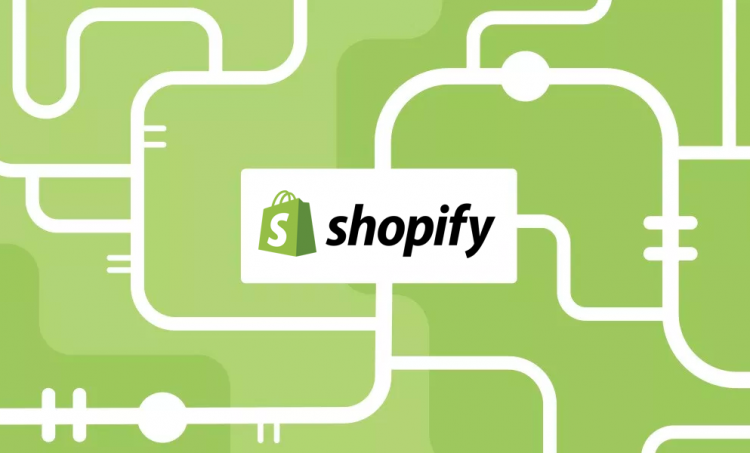Shopify positions itself as the coronavirus — and beyond — platform

More retailers are relying on their online business to keep sales afloat while stores are closed, and Shopify is pivoting to meet this need.
Over the past few weeks, Shopify has been working on more features to help merchants move more sales online, as well as to prepare for when stores do re-open. Yesterday, Shopify announced that it is releasing a new point-of-sale system that will allow merchants to fulfill curbside pickup orders, as well as more easily manage in-store appointments. Last week, it unveiled Shop, a rebrand of its package tracking app called Arrive that is supposed to help customers more easily shop from local businesses. And last month, it announced that it was extending its free trial from 30 days to 90 days, targeting small businesses who may be setting up an e-commerce operation for the first time.
Shopify, which powers the e-commerce sites of more than 1 million merchants, began as the platform for small-to-medium sized merchants to power their e-commerce sites. As some of the companies that started on Shopify grew into eight and nine figure businesses, Shopify started adding more features to grow up alongside its customers, like a point-of-sale system designed for retailers who manage multiple stores, and most recently a fulfillment service. Shopify, as well as some of its biggest competitors like Magento, BigCommerce, and Salesforce, are all jockeying to prove that their solutions are the best all-in-one platform to help e-commerce businesses grow.
A new point-of-sale system
The business-to-business players in e-commerce that are best positioned to grow during the pandemic are ones that most quickly add new features to help companies adjust to the new order of retail, where shoppers want as little physical contact as possible in order to get their purchases. But, it remains to be seen whether highly discussed features like curbside pick-up and in-store appointments will be enough to help retailers survive.
“The way that we look at it is we are trying to enable retailers to make sales beyond their stores, so in a tough retail environment, they can continue making sales even again when store traffic is low, and when consumer traffic returns, they can grow sales,” said Arpan Podduturi, head of product for Shopify Retail.
Podduturi said that Shopify was already in the process of redesigning its POS before the coronavirus, but decided to accelerate the development of a few new features, namely fulfilling curbside pick-up orders and home delivery. Shopify said that by the end of April, 26% of its merchants with a brick-and-mortar presence were offering local delivery or buy online, pickup in-store, compared to 2% in February.
With the new POS, Shopify is also more prominently highlighting partner apps that offer services like scheduling appointments for in-store visits, and counting how many shoppers have come through the door. Podduturi said that with the previous POS, store staff would have to toggle through several menus in order to see if someone had scheduled an appointment for an in-store visit, they can now manage that through the home screen.
Ad position: web_incontent_pos1
Podduturi declined to say what other features Shopify has in the works in the coming months, but that the company is preparing for a future where “stores are going to look much more like fulfillment centers,” and “store staff are also going to take a more active role in clienteling, in marketing, in connecting with customers over digital channels.”
“Until there is a widely distributed cure for Covid-19, retailers are not going to be allowed to have the same density of customers in their store that they aspired to have before Covid-19,” said Jason Goldberg, chief commerce officer at Publicis. “So the way every brick-and-mortar store is going to try to survive, is to supplement their sales with curbside or doorside sales.”
Pivoting to consumer-facing tools
But in order to help these retailers to survive, they have to do more than just offer curbside sales. Retailers also have to make sure that new and existing customers know that these new ways of buying exist, and keep customers coming back to their businesses. That appears to be one of the goals of the new Shop app. Shopify describes Shop as a shopping app designed to rediscover brands they’ve previously purchased from. When a user signs up through the app, they are shown Shopify-powered stores they have previously shopped through.
But the Shop app lacks a number of features that consumers have come to expect out of shopping apps. There’s no way for users to search by product on the Shop app, only by business. Shopify did not make someone who worked on Shops available for an interview but said through a spokesperson that, “there’s not a product search feature because first and foremost Shop is not about discovery. It’s about a faster checkout, a more convenient tracking experience, and then enabling shoppers to stay in touch with the brands you have purchased from in the past.”
Users are also still taken to the businesses’ website to check out, instead of through the app, which is a clunkier experience than other apps that have added one-click checkout.
Ad position: web_incontent_pos2
The Shop app seems to be trying to tackle many problems rather than honing in on just one. As the company continues to expand — and build out tools competing with different players, like Amazon — it will have to perfect its consumer strategy.
“Shopify seems like they are debating with themselves what it is even supposed to be,” Goldberg said. “Shopify provides a bunch of really valuable services to brands and retailers, but one thing that they don’t provide a lot of is methods of traffic generation. So a marketplace would be a great way of leveraging their breadth of clients and sort of aggregating shopper interest,” he added.

